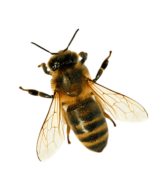
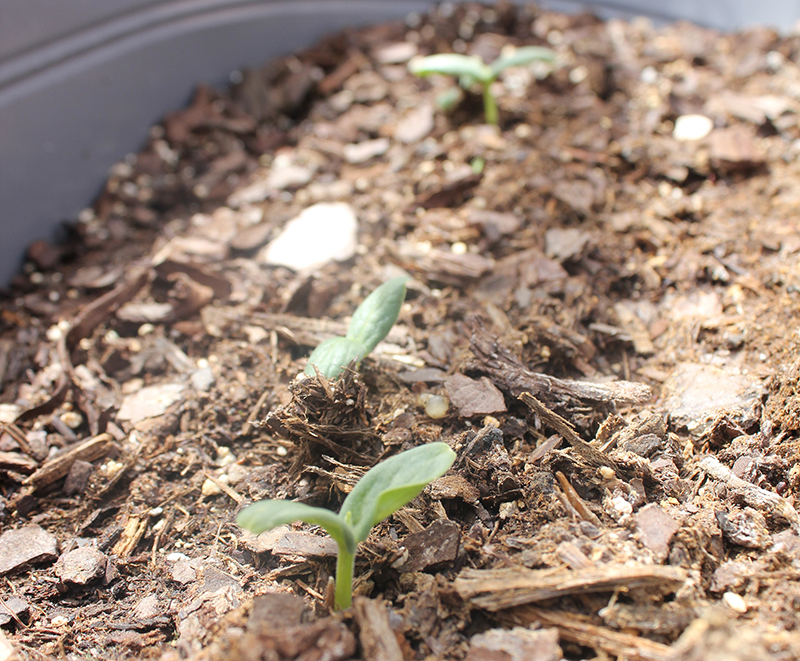
Makayla Grijalva | News-Bulletin photos
In addition to the southwest mix, Ronda Sanchez also planted a few cucumber seeds into the library’s pollinator garden. She said she expects the garden to be in full bloom by August of this year.
Through the unsuspecting back doors of the Los Lunas Public Library, small green sprouts, sitting in several colorful pots and planters, are tasting their first rays of sunlight after being planted as seeds a few weeks prior.
Though they may not look like much now, by August the library staff expects the plants to be lush, creating a safe haven for Valencia County pollinators.
Ronda Sanchez, who planted the library’s garden, has already seen a few bees and small birds beginning to enjoy the sprouts.
“This is the second day that I’ve seen bees swarming around and just a few minutes ago there were three small birds and one large bird that was hanging out in there picking around,” Sanchez said. “It’s amazing how just a little bit of effort and a little bit of wildlife can help.”
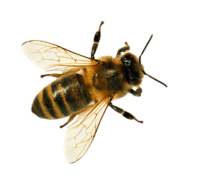
In the future, Sanchez hopes to expand the garden past the pollinator section into a community effort with an assortment of fruits and vegetables for the community to enjoy.
The small garden, seed packets and series of pollinator friendly events hosted by the library were funded by a #PlantWildflowers initiative, HHMI Tangled Bank Studios and PBS Nature.
The #PlantWildflowers initiative is a National Science Foundation initiative, which works specifically with libraries. Stephanie Birr, the children’s librarian at the Los Lunas Public Library, put the village’s name in the hat to be a part of the program.
“It’s very exciting because pollinators are so important for our ecosystems, and we want to bring awareness to how important they are,” Birr said.
Through the grant, the library is also hosting several education programs about pollinators, with the next being a field trip to go to a bee seminar at the Hayes Honey and Apple Orchard on Saturday, May 14. They are sponsoring 33 locals to attend and will be passing out more than 500 packets of southwest wildflower seeds.
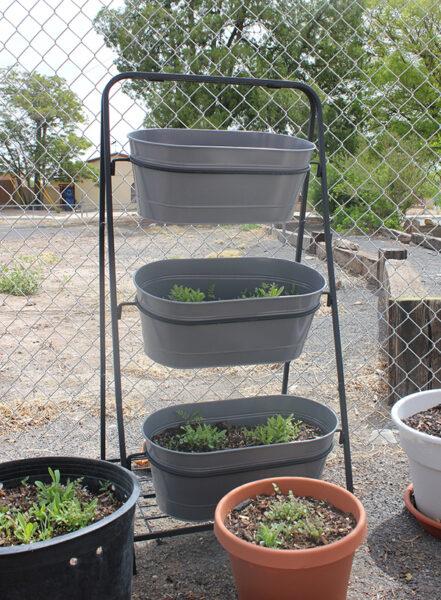
“It’s very exciting because pollinators are so important for our ecosystems and we want to bring awareness to how important they are,” Children’s librarian Stephanie Birr said. She wrote the grant to bring seed mixes and educational events on pollinators to the Los Lunas library this summer season.
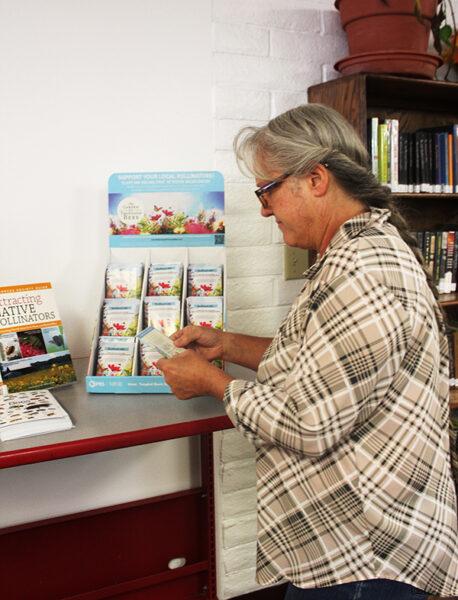
Ronda Sanchez, who planted the library’s pollinator garden, looks at the Southwest seed mixes ,which are available for free at the Los Lunas Public Library.
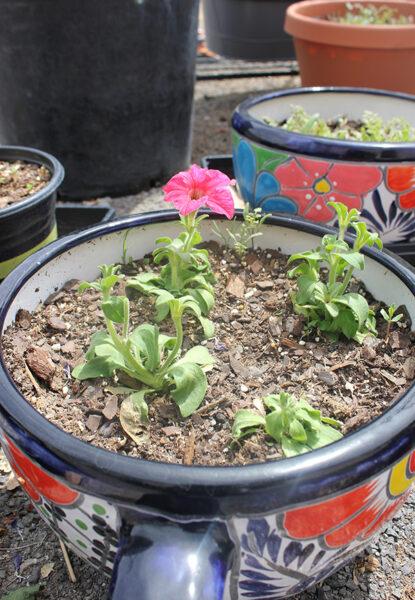
A leftover Mother’s Day pansy is currently the only flower in bloom at the Los Lunas public library’s new pollinator garden.
Starting a pollinator garden
While the honeybees are the poster child for pollinators, there are many other bugs and insects which get the job done in New Mexico, including over a thousand species of native bees, many different types of moths and butterflies and even some flies and beetles.
According to Miranda Kersten, who works closely with the Integrated Pest Management Program at the NMSU Los Lunas Agricultural Science Center and looks into which native plant mixes attract which insects, the biggest things to consider when starting a pollinator garden is creating a healthy habitat throughout the spring, summer and fall as well as nesting habitats.

“Some things can be as simple as if you have a herb garden already, just letting them go to flower or letting some of them go to flower,” Kersten said. “We have chives in our garden here at the science center and there are all sorts of bees and butterflies on the flowers.”
While Kersten is always an advocate for native plants, she has recently also come around to including ornamental plants, typically found at larger retailers such as Walmart or Lowes, in gardens.
“You have to be careful about them since some are more showy and don’t have the pollen and nectar for the pollinators,” she said. “But it’s still OK to plant them. You just might not have insects visiting.”
She encourages everyone who wants to start a pollinator garden to walk around their already established gardens to observe which bugs and insects are already visiting their spaces before expanding.
There are many environmental benefits to beginning to cater to local pollinators, such as providing them a safe habitat since loss of habitat is one of the major threats to pollinators such as native bees who cannot travel very far to pollinate.
They also create a natural pest control by attracting beneficial insects, such as ladybugs to control aphid populations.
Kersten advised gardeners to avoid pesticides and insecticides, adding if pesticides must be used, to be mindful of use to minimize harm to the bugs enjoying the garden.
“I would also just like to encourage people to get outside. Insects are fascinating, pollinators are fascinating,” Kersten said. “If you just watch a bee work a flower long enough, it’s just that not everyone takes the time to go and just appreciate what they are doing.”
Click the advertisement above for more information
Makayla Grijalva was born and raised in Las Cruces. She is a 2020 graduate of The University of New Mexico, where she studied multimedia journalism, political science and history.
